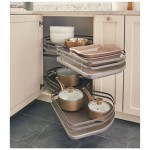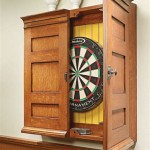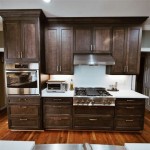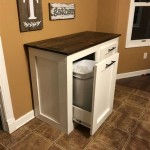Where To Install Knobs On Kitchen Cabinets
Installing knobs on kitchen cabinets can significantly enhance their functionality and aesthetic appeal. However, determining the optimal placement of knobs is crucial to ensure both practicality and a visually pleasing outcome.
This article delves into the essential aspects of where to install knobs on kitchen cabinets, providing a comprehensive guide for homeowners and designers alike. We will explore key factors to consider, including cabinet size, functionality, and design principles.
1. Cabinet Size
The size of the cabinet plays a significant role in determining the ideal placement for knobs. For smaller cabinets, centrally locating the knobs provides a balanced and symmetrical appearance. Larger cabinets may require two sets of knobs, one on each side, to ensure easy accessibility.
2. Functionality
Functionality is paramount when choosing the knob placement. Knobs should be positioned in a way that allows for comfortable and effortless opening and closing of the doors. Typically, knobs are installed at a height that is easy to reach and operate without straining.
3. Design Principles
The principles of design, such as balance and symmetry, can guide knob placement for aesthetic purposes. Symmetrical placement of knobs on opposing doors creates a visually cohesive and balanced effect. Similarly, arranging knobs along a consistent line horizontally or vertically enhances the sense of order and visual appeal.
4. Distance from Edges
Maintaining appropriate distance from the edges of the cabinet is crucial for avoiding interference with handles or other hardware. A standard distance of 2-3 inches from the edge ensures ample space for gripping and operating the knobs comfortably.
5. Height and Placement on Doors
The height and placement of knobs on doors depend on personal preference and the size of the cabinet. For base cabinets, knobs are typically installed 2-3 inches above the bottom edge of the door. For upper cabinets, a higher placement of 4-6 inches above the bottom edge may be more suitable to prevent hands from bumping into countertops.
6. Consistency and Uniformity
For a cohesive and visually appealing appearance, strive for consistency in knob placement throughout the kitchen. Maintaining a standard height and distance from edges for all cabinets creates a sense of uniformity and visual harmony.
Conclusion
By considering the essential aspects discussed in this article, you can determine the optimal placement for knobs on your kitchen cabinets. Remember to prioritize functionality, aesthetics, and consistency to achieve a practical and visually pleasing result that enhances the overall look and functionality of your kitchen.

Learn How To Place Kitchen Cabinet Knobs And Pulls Cliqstudios

How To Place Cabinet Knobs Pulls

Where To Put Knobs And Handles On Kitchen Cabinets

A Simple Guide For Cabinet Knob Placement Julie Blanner

How To Install Cabinet Handles Ultimate Stress Free Tips

How To Place Cabinet Knobs Pulls

How To Easily Install Kitchen Cabinet Hardware The American Patriette

A Simple Guide For Cabinet Knob Placement Julie Blanner

Installing Cabinet Knobs Pretty Handy Girl

How To Place Cabinet Knobs Pulls
Related Posts








